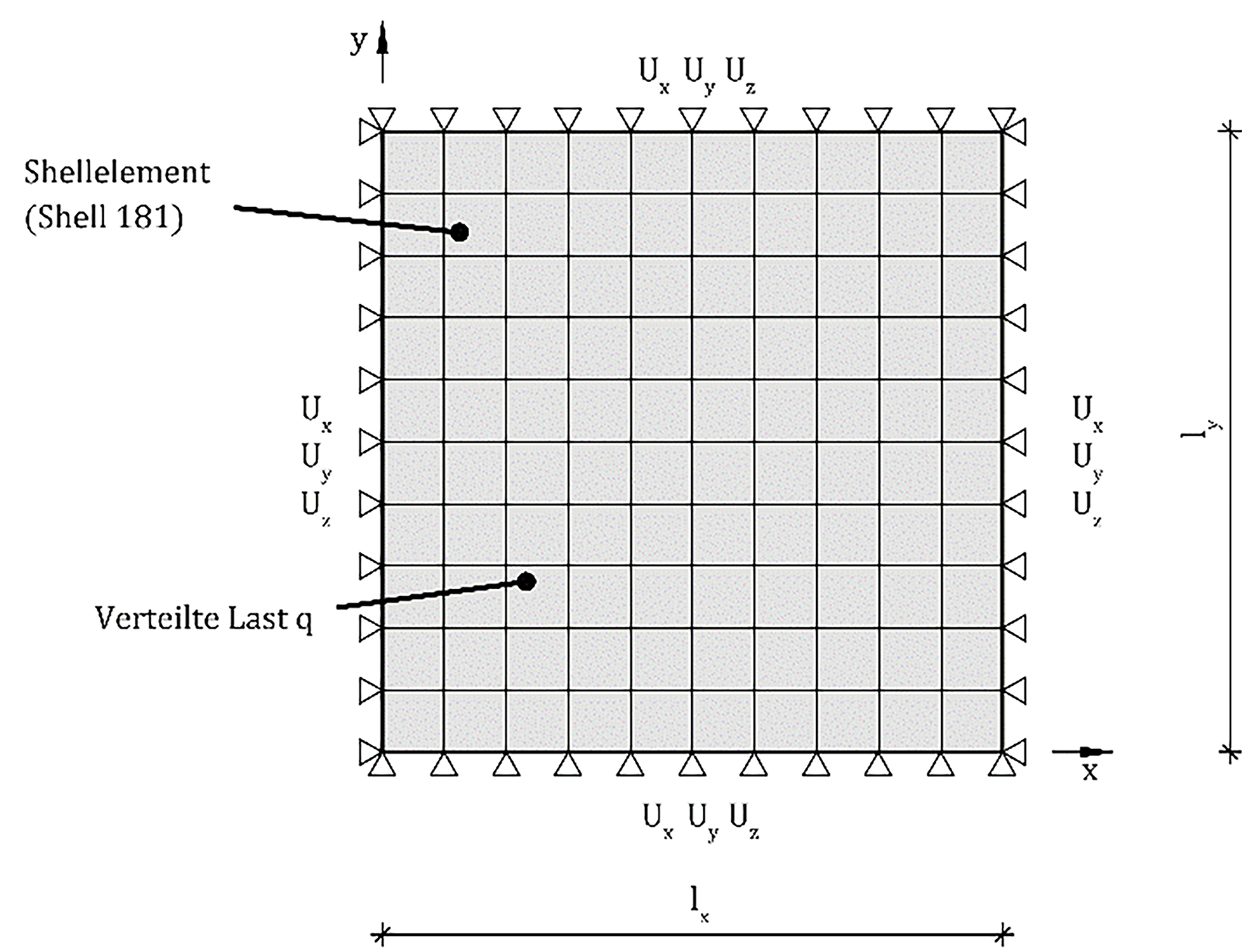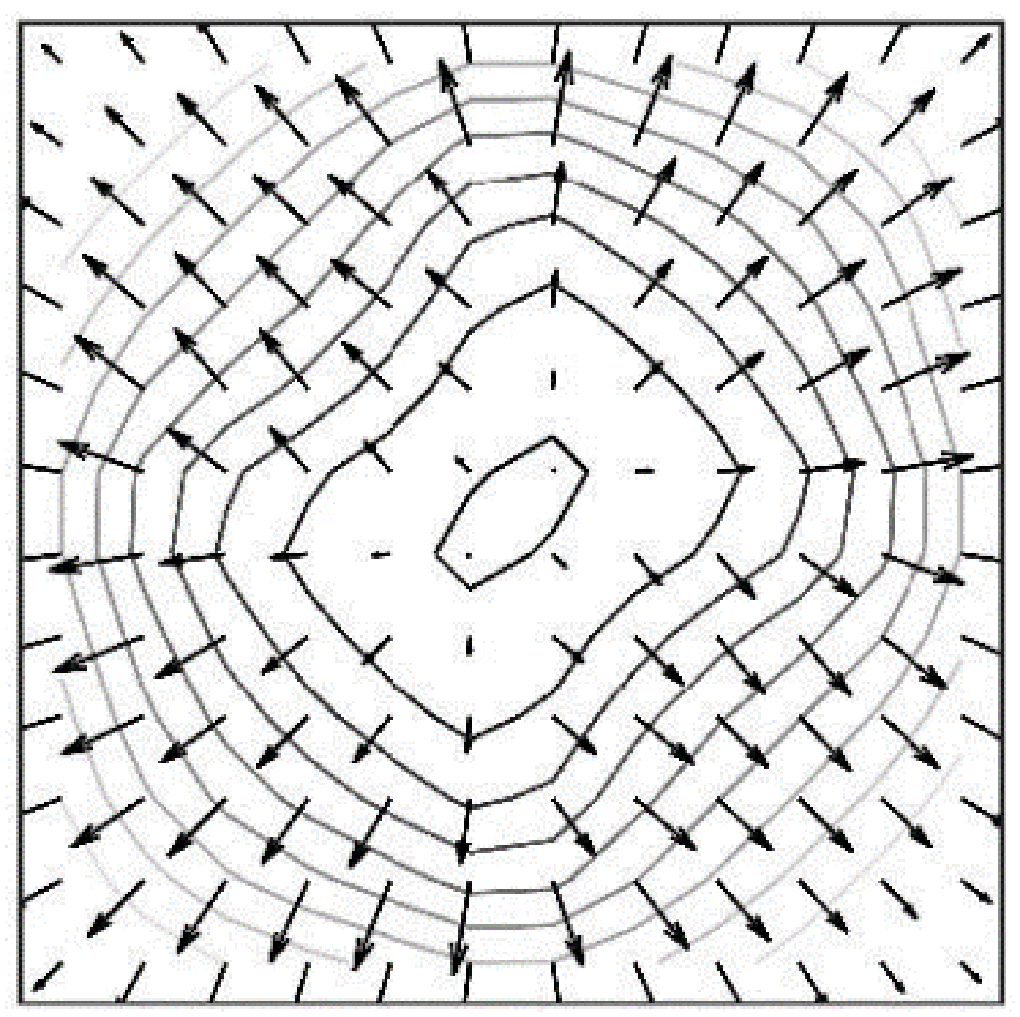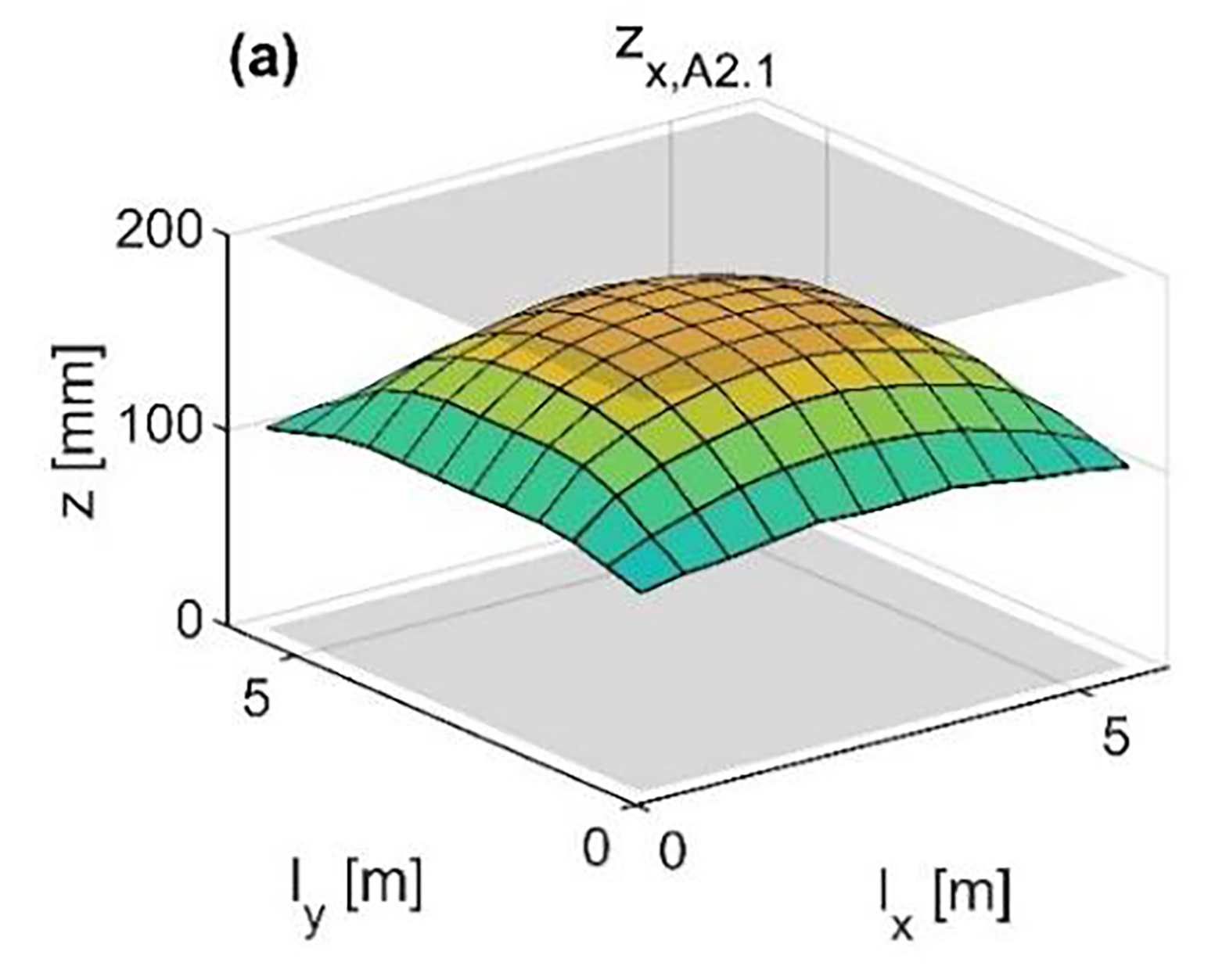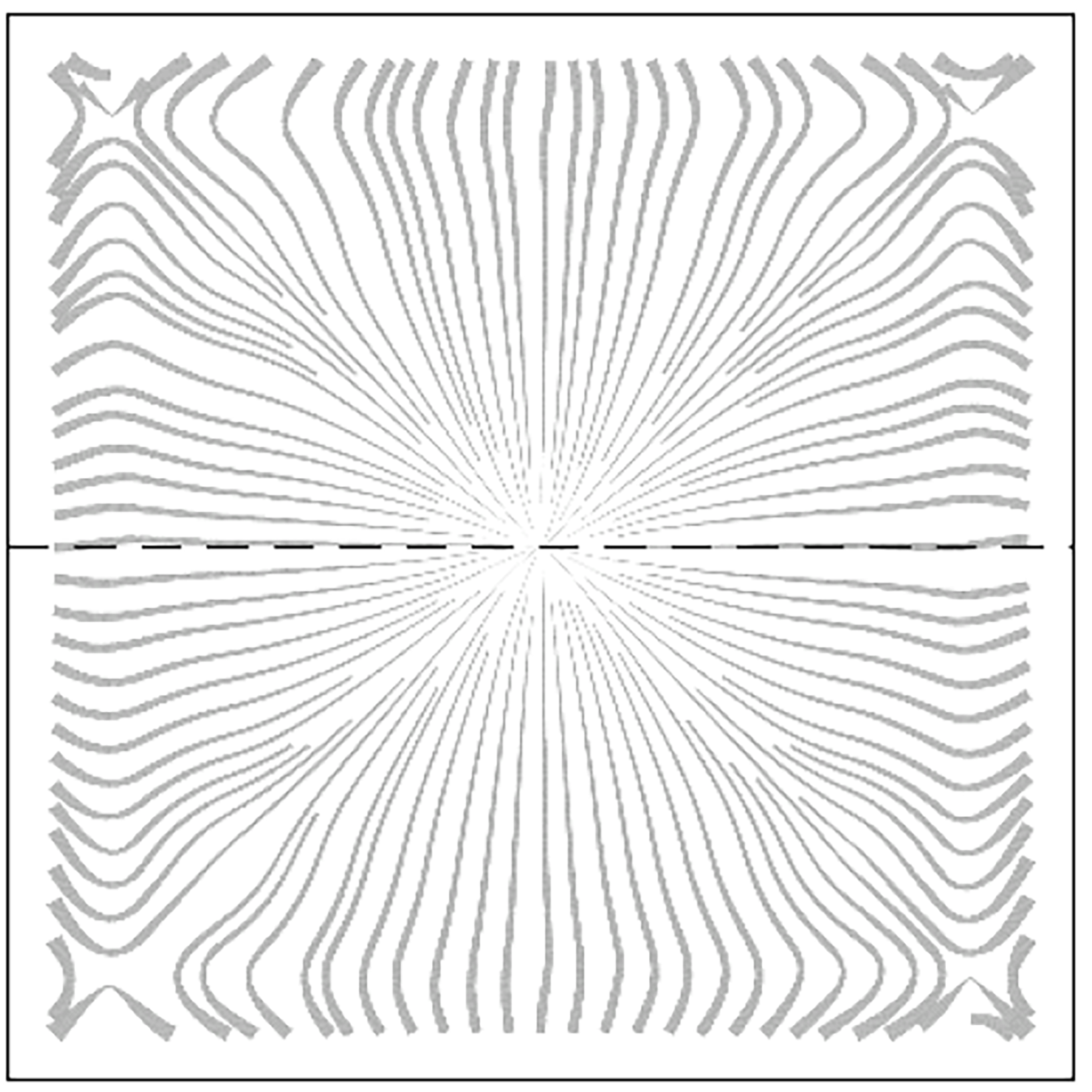Compressive membrane action in laterally restrained concrete slabs
Author: Louis Deidenbach
Language: English
Abstract
The longitudinal restraint of reinforced concrete members induced membrane stresses, which can cause compressive membrane action. In general, the compressive membrane action reduces the steel stresses and thus has a positive effect on the bending and shear capacity as well as on the fatigue resistance.
In this Master’s thesis, the location of the compressive membrane surface is determined for general loaded concrete plates based on given internal forces using equilibrium. The approach is applied to various structures (e.g. slab strips, one-way and two-way rectangular slabs, and point-supported slabs). The internal forces are each determined based on a non-linear finite element calculation using the CMM-Usermat.
The gradient is determined for the compressive membrane surface and compared with the principal shear force flow. In areas with low twisting moments, the gradient of the membrane surface coincides with the direction of the principal shear forces. In regions with large twisting moments (e.g. on edges), the deviation between the gradient of the membrane surface and the direction of the principal shear forces increases sharply. This is mainly because twisting moments lead to a loss of calculation accuracy (cancellation errors) when using the equilibrium approach to determine the compressive membrane surface.
The work serves as a starting point for developing an analytical approach, which considers the positive influences of the compressive membrane action on the load-bearing behaviour of reinforced concrete structures.




